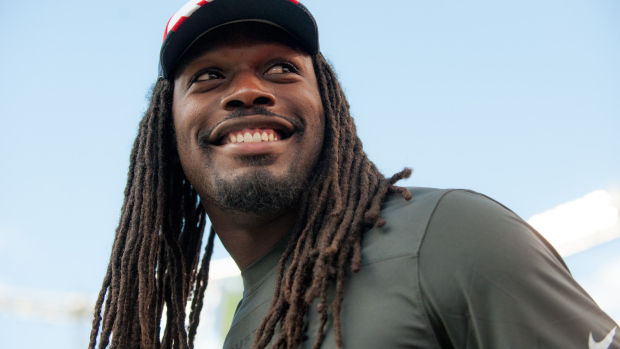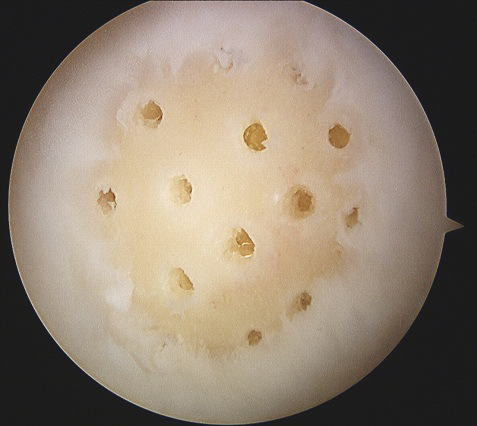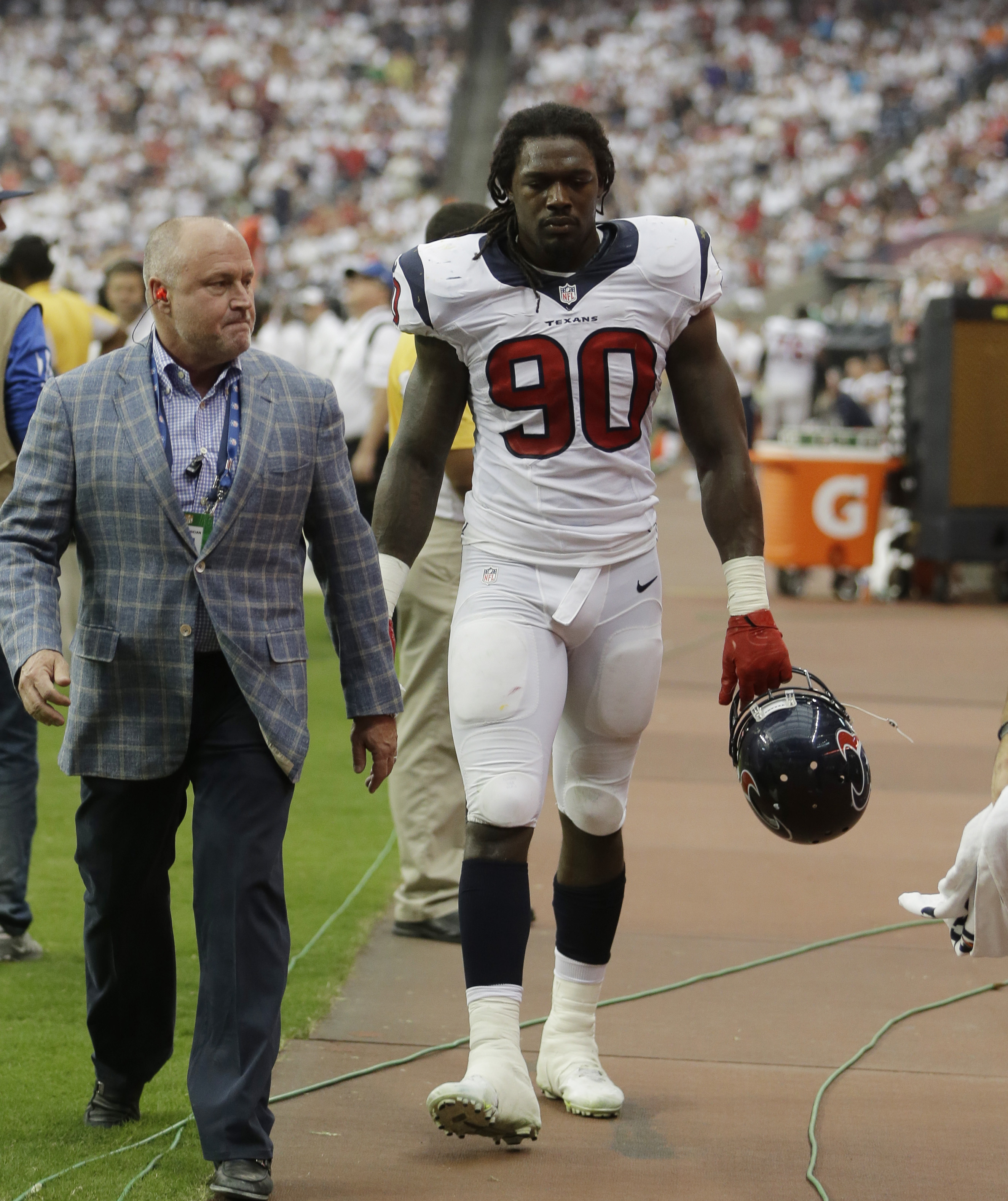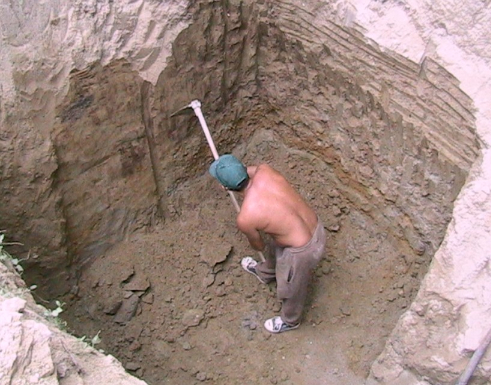edwardc5637
Waterboy
He is going to be ok just having him on the field will make a difference other teams will have to think about what to do with him .
Death to Google Ads! Texans Talk Tip Jar! 🍺😎👍
Thanks for your support!
What about the bone spurs.....?

Saw Clowney in a video made within the last few days and his right leg does look significantly thinner.

The camera angle might make it seem skinnier, but it reminds me of when I got my cast off. My arm was in a cast for 8 weeks. It was skinnier but it only took a couple months for it to beef up again.
If he can run around well and feels good, then I'd start him day one if he says he is ready. Otherwise, I'd consider waiting a month or two into the season.



but a full-thickness cartilage defect in a 22 year-old is ominous.
I can't recall - it's been several months - but this is not something new to me. The article I'm remembering also said that the longer you wait, the stronger the repair gets. This is why sitting out the year and not coming back until the 2016 season would be for the long term best. But we all know this will in all probability not happen.... the question is how long his new surface will last. The knee heals with fibrocartilage that fills in the defect and is never as strong as the original hyaline cartilage...
Need a new head ? NP ! Looks like this dude is gonna get fixed up pretty quick with his brand new head. What the hell, how come thy can't get my boy Jadevon a brand spankin new, better than ever knee cap ! Seems to me in this day and age that should be a snap ?UNDATED (CNN) -- The world's first full head transplant could take place as soon as 2017 if the controversial plans by Italian neuroscientist Dr Sergio Canavero come to pass. Wheelchair-bound Valery Spiridonov, who has the muscle-wasting Werdnig Hoffman disease, has volunteered to have his head transplanted onto a healthy body in a day-long operation.
Read More at: http://www.local12.com/news/feature...-transplant-create-a-new-person--155008.shtml
I can't recall - it's been several months - but this is not something new to me. The article I'm remembering also said that the longer you wait, the stronger the repair gets. This is why sitting out the year and not coming back until the 2016 season would be for the long term best. But we all know this will in all probability not happen.
December 2015 will be 12 months. Allowing for differences in the patient, maximum improvement could reasonably not be expected until OTA's in the 2016 off-season. My unprofessional reasoning is that, for a surgery which has not achieved maximum functional improvement, there is a corresponding increased risk for re-injury. Cushing made it through last season without further damage. This year we should see his best post-operative performance. Clowney's comeback should follow the same timeline....It has been shown that functional improvement (degree is variable from patient to patient) occurs up to 18 months following surgery...
The fibrocartilage produced by microfracture surgery is basically matured and remolded (to relatively smooth out the lumps and bumps originally produced by the surgery) by ~6 months. The time taken beyond that is typically mostly for rehabbing strength and coordination and confidence. It has been shown that functional improvement (degree is variable from patient to patient) occurs up to 18 months following surgery, but tends to decrease significantly after that, as the fibrocartilage begins to significantly wear/shave down and changes of arthritis from the original injury begin to appear. In the case of the professional athlete, the extra stresses placed on this psuedo cartilage hastens the process. What's interesting is that most orthopedic surgeons that perform microfracture surgeries will counsel their patients that success of this surgery depends life-long activity modifications..........and, in the case of those wanting to return to sports, to specifically avoid cutting maneuvers These cutting actions are the hardest on true hyaline knee cartilage in general, but much harder on the weaker and less durable fibrocratilage of microfracture surgery. And don't forget that removal of some of Clowney's lateral meniscus cartilage has already destabilized the knee to some extent and makes cutting even more traumatic to the knee cartilage. Limiting cutting movements would be difficult enough if it were advise given to a weekend warrior, but would be entirely out of the question for a player like Clowney.
December 2015 will be 12 months. Allowing for differences in the patient, maximum improvement could reasonably not be expected until OTA's in the 2016 off-season.
The 18 month cutoff was determined by anatomic changes in the areas of lesions seen on MRI. OTAs 2016 would be approximately the 18 month period where the fibrocartilage and performance (from what had maximally been attained any time since surgery) typically begins to deteriorate.
My unprofessional reasoning is that, for a surgery which has not achieved maximum functional improvement, there is a corresponding increased risk for re-injury.
Maximal functional anatomical improvement is not synonymous with achieved performance level. It should be noted that this study included non athlete patients. So these changes were noted in patients whose typical stresses were from simple activities like walking and climbing stairs. Furthermore, patients with a history of meniscal damage were excluded from the study, since such damage would account for some degree of joint instability and be expected to skew the results downward. There won't be any argument from me that not being rehabbed to optimal muscle strength and coordination would likely lead to further injury, but this does not require 18 months.
Cushing made it through last season without further damage. This year we should see his best post-operative performance. Clowney's comeback should follow the same timeline.
With the type injury(ies) he has been coming back from, I wouldn't be so quick to this conclusion. Especially with his tibia plateau injury, whether reported or not, there has probably been progressive cartilage damage. This is another type of injury that can often follow a "wear down" history, where some prolonged rest can allow a limited, usually short period of satisfactory performance followed by a notable reversal with increased mileage. It would not surprise me at all if we hear that microfracture surgery comes up into discussion with Cushing in the next year.
And based on all their differences and circumstances, I would definitely hesitate to compare any given timelines between Cushing and Clowney.
Thanks Doc for helping bring reality to the Cushing/Clowney situations.
Seems to me (from reading Doc and following up on his info), I'll pick odds rather than reality, are Cushing gets into the probowl before Clowney.
****
My advise to you would be to make that bet all day long if you can.
Seems to me (from reading Doc and following up on his info), I'll pick odds rather than reality, are Cushing gets into the probowl before Clowney.
My guess is he was talking future not past
I believe he'd take option #3: neither.
Being the bell cow in a medical procedure is usually an act of desperation. But there are always desperate people ready, willing and able to take the chance. I never thought I would ever be that desperate until I experienced infection generated 12 on the 1-10 pain scale (intentional hyperbole which I know is mathematically impossible). Fortunately, it was only for a few hours (that I can remember since I don't remember the next two weeks).Need a new head ? NP ! Looks like this dude is gonna get fixed up pretty quick with his brand new head. What the hell, how come thy can't get my boy Jadevon a brand spankin new, better than ever knee cap ! Seems to me in this day and age that should be a snap ?
Plaxico Burress blasts Nick Saban as a liar
After Alabama coach Nick Saban complained that some of his players look ahead to the NFL draft instead of focusing on finishing their college careers, one of Saban’s former players lashed out.
Plaxico Burress, who played for Saban at Michigan State, says that Saban is a liar who puts his own interests ahead of the interests of his players — and Burress thinks it’s only fair that Alabama players should put their needs first, too.
“I was a 19 year old kid, the man that recruited me to play for him, look me in my face and told me a lie,” Burress wrote on Twitter.
Saban quit Michigan State at the end of Burress’s final season there, jumping ship to coach LSU and not staying to coach Michigan State’s bowl game. Burress says that just before Saban left, he promised his players he wasn’t leaving.
“Saban looked his players in the face at the [Michigan State football facility], said he wasn’t leaving, ‘I’m committed to the program,’ and was gone the next day. True story,” Burress wrote.
Burress also suggested that Saban misled him about his pro prospects, apparently to get him to stay focused on playing in college instead of focusing on the NFL draft.
“Nick Saban actually told me I was a second round pick,” said Burress, who was the eighth overall pick in the 2000 NFL draft. “I recall Nick Saban telling me to stay in school finish what I started, I wasn’t 1st round pick and he left for LSU before the season was over.”
Burress told Saban of college players who look ahead to the NFL, “the kids are just chasing a dream that you were.” Burress is right about that.
Honorable people are getting rarer all the time.Rather than begin a new thread in the NFL section, I thought that this might be appropriate to post in this thread in that Sabin had some non-supportive statements when asked about Clowney around Draft time............and Clowney in turn recently returning the favor.
Honorable people are getting rarer all the time.
But this post was a non-supportive of Sabin article by Burress, not Clowney. Is this a mistake or broken link?
Honorable people are getting rarer all the time.
We must live on different planets then.There are honorable people all over the face of this planet.
We must live on different planets then.
Some people see, but do not perceive.I will take that as a compliment, intended or not.
We must live on different planets then.
Agreed. Those with perception problems find others of like mindlessness.I think it's more about like finds like.
Some people see, but do not perceive.
Agreed. Those with perception problems find others of like mindlessness.
It isn't required to understand which category a certain someone is in.Spend a few moments, or hours as necessary, and you'll understand how stupid that response is.
I assure you there is no condescension. Just observation of truth. Rare does not mean non existent, only precious and a treasure when found.Your dollar store rolodex-o-wisdom doesn't change that I perceive what I see just fine Marshall.
I'm just glad that you've found your own miserable little planet to condescend from. If you ever want to escape that 4 foot radial bubble I can assure you there are decent and caring people of honor with which to interact from where I sit. My only advice is to try your hardest not to cast any stone when they reach out for a handshake.
It isn't required to understand which category a certain someone is in.
Mark
4:9 Then Jesus said, “Whoever has ears to hear, let them hear.”
10 When he was alone, the Twelve and the others around him asked him about the parables. 11 He told them, “The secret of the kingdom of God has been given to you. But to those on the outside everything is said in parables 12 so that,
“‘they may be ever seeing but never perceiving,
and ever hearing but never understanding;
otherwise they might turn and be forgiven!’a]">[a]”

Typically, given the knee injury and subsequent surgery, a guy Clowney’s size would have lost about three centimeters of girth around his quadricep. That didn’t happen. Not even close. He lost between a 1/2 centimeter and 1 centimeter, said Dr. Walt Lowe, the head team physician for the Texans.
***Not sure if this has been shared before:
The Medical Edge For A Former No. 1 NFL Pick
http://www.forbes.com/sites/jerrybarca/2015/07/19/the-medical-edge-for-a-former-no-1-nfl-pick/
Or perhaps the reason has to do with JD being an extraordinary physical specimen ?
Not sure if this has been shared before:
The Medical Edge For A Former No. 1 NFL Pick
http://www.forbes.com/sites/jerrybarca/2015/07/19/the-medical-edge-for-a-former-no-1-nfl-pick/
Was posted in the old JdC thread:http://www.texanstalk.com/posts/2456207/
From Tania's 2/2015 article:http://espn.go.com/blog/houston-tex...ng-undergoing-blood-flow-restriction-training
With Dr CND's follow-up posts after that link, but cannot quote & paste here because topic is locked.
Doesn't affect the underlying problems, only potentially quicker muscular recovery.
But from what I hear they only see this kind of specimen once in a generation.Team docs for NFL teams are used to seeing those.
I wonder if the docs used stem cell therapy on JDC. My brother just had his second shoulder surgery and they used stem cell therapy. He said the difference was night and day.
But from what I hear they only see this kind of specimen once in a generation.
While most of the controversy about stem cells is over fetal stem cells, most of the success has come from adult stem cells, at least the last time I checked. I'm not sure how they categorize the various therapies which could broadly be called stem cell therapy. I suspect a basic difference would be between introduction of new stem cells and utilization of existing stem cells. Then a further distinction between types of stem cells and finally differences in techniques. This is where information from someone familiar with the procedures is invaluable.I thought CnD said microfracture surgery technically releases stem cells from the bone...
